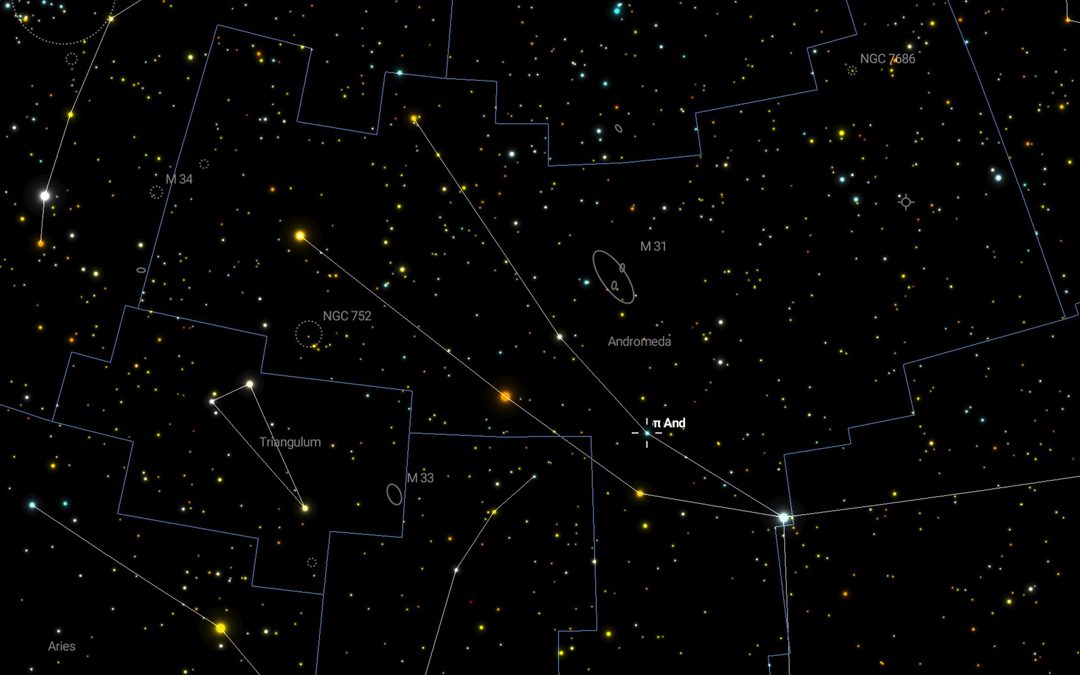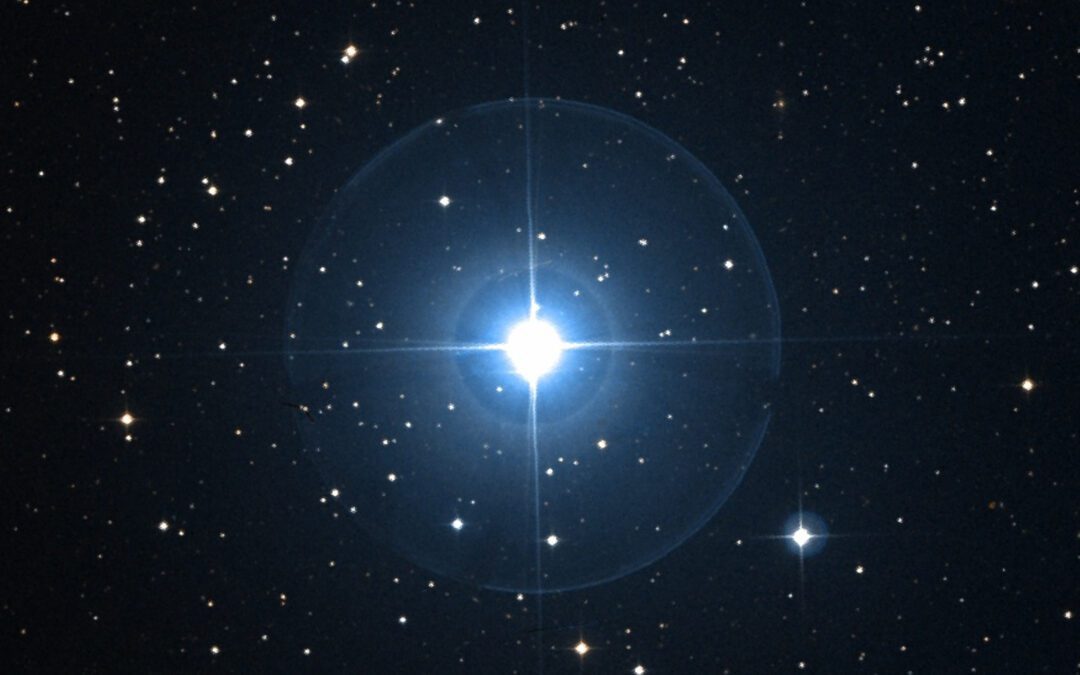My happy discovery of Pi Andromedae occurred on Wednesday 15 November 2023 while I was making observations of the double star STFA 1, which is near Delta Andromedae, just to the south of Pi, following up on this Cloudy Nights topic about using hand held binoculars to observe double stars. Most of my binocular double star observations are made with mounted instruments, but fun can also be had with hand held binoculars, concentrating on wider and brighter pairs. So inspired by the Cloudy Nights topic, I have been delving into the hand held genre a bit more, and discovering an ideal companion for that journey in my long neglected Canon 10x42L IS image stabilized binocular. But more on that in another post.

A feature of Pi Andromedae which pleases me a lot is that it is included in the primary constellation asterism, and is easily located with minimal effort. Yet I have observed objects in Andromeda for decades without so much as glancing at this fine double star. That is the power and charm of slowing down and wandering the sky with binoculars. So much more can be seen. Even from an urban yard like mine.
H 5 17 AB / Pi Andromedae
00h36m +33*34′
4.36/7.08 sep 36.22″ pa 174.5*
Distance: 549.18 / 568.31 Light Years
Spectral Type: B5V / A6V
Color Index: -0.16 blue-white / +0.687 yellow-white
I was not able to resolve Pi with the aforementioned Canon 10×42 because of the significant magnitude difference between the primary and secondary components. It can be observed readily with 15x binoculars, but I prefer the view with 20x binoculars like the Oberwerk 20×70 ED Ultra. My observation notes from November 15 describe it as “a brilliant white primary with a tiny white dot of a secondary hovering by its side.”
The discoverer code is that of William Herschel, whose codes in the WDS differ from the normal pattern by having two number components. An explanation of the Herschel numbering pattern is provided in Bruce MacEvoy’s handprint.com website, on a page devoted to his restoration of Herschel’s double star catalogs. The first numbered component is a class designation based on the component separations. The second number is the index for the given class designation.
- Class I – most difficult
- Class II – less than 5″ separation
- Class III – 5-15″ separation
- Class IV – 15-30″ separation
- Class V – 30-60″ separation
- Class VI – greater than 60″ separation
So, Pi Andromedae (H 5 17) is the 17th star cataloged by Herschel in Class V (Arabic numeral 5).
MacEvoy’s restoration of the Herschel double star catalogs involved identifying Herschel’s original discoveries, many now listed under the codes of subsequent observers who followed up on his original observations including his son John Herschel (HJ) James South and John Herschel (SHJ), Friedrich Wilhelm Struve (STF, STFA), and others. Excluding duplicate entries in the original catalogs, MacEvoy confirmed 805 double stars included with current measures in the standard double star reference (the Washington Double Star catalog) from a total of 827 entries. The remaining 22 entries could not be identified with certainty.
In addition to details about Herschel’s original catalogs and how MacEvoy went about cross-referencing them against current discoverer codes, links to the restored catalogs in spreadsheet format are also provided, including this link to a Herschel 500 list MacEvoy created to parallel the Herschel 400 list of deep sky objects widely observed by astronomy hobbyists.


Thanks to JoeFaz on CloudyNights for posting a question about the discoverer code “H” versus “h”. The uppercase “H” is for William Herschel and the lowercase “h” is an alternative to HJ, which is the code for his son John Herschel. See Bruce MacEvoy’s Double Star Astronomy Part 3: Double Star Datasets page for additional information.